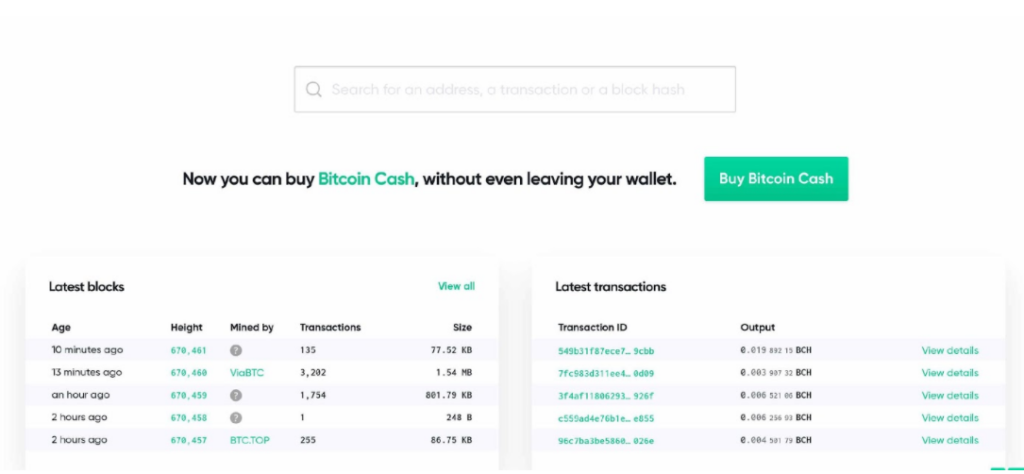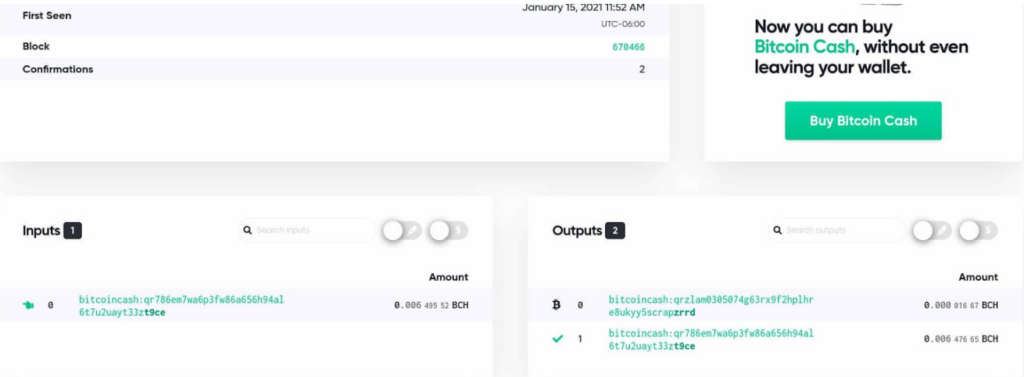By David Mangiaracino
Ever clicked on a transaction ID and had your eyes glaze over trying to decipher what is going on? This article should help you better understand what you were looking at on blockchain explorers.
Maybe you were given a transaction ID and it wasn’t clickable what now. That is where a block explorer comes in handy. A block explorer is the tool that is used to examine transactions on a blockchain. A block explorer allows you to see the current state of transactions and blocks in real time. And a block explorer allows you to search for specific transactions by block, transaction ID, or wallet address.
This is what makes bitcoin auditable by anyone and make sure that transactions are happening the way they were intended. Each block explorer site looks a little different, but at the core they all present the same transaction information.
For this article we will be using Bitcoin.com’s block explorer.
To begin exploring you need to select the blockchain you want to look at. In the upper left hand corner, see the red arrow in the image below, you can select either Bitcoin Cash (BCH) or Bitcoin (BTC). Next to those selectors you have the option for Mainnet and Testnet. Testnet is used by developers testing out code before deploying it to Mainnet. You want Mainnet.
For this article we are going to look at BCH. The search box is where you can search for a block, transaction ID or wallet address.
As you continue down the page you can see the latest blocks table on the right and latest transactions table on the left. The latest block shows a table of how long ago the last block was mined, that block’s height, which mining pool mined the block, how many transactions that block contains, and lastly the size of the block in KB.
Clicking on the block height will take you to the explorer page for that block. Latest transactions is a list of transactions that are waiting to be mined into blocks. Latest transactions list shows an abbreviated transaction ID, amount of BCH in the transaction, and a view details link. Clicking the transaction ID or view details link will take you to that transactions explorer page.
I chose a random block in the latest block table. We will be looking at Block 670466. If you are following along you can enter that block number in the search box or follow this link.
At the top of the page you have a long string of numbers containing the block’s hash along with a copy button. In the summary section at the time of writing this block was mined on January 15th, it is 13 minutes old and has 2 confirmations. Below the summary starts a list of the transactions contained in the block. There are 45 transactions in this block. The first transaction in a block is called the coinbase. The coinbase is the address for the miner that mined the block. The output of the coinbase transaction is the mining fee for the block.
Taking a look at the second transaction in the transaction list. Transaction ID: 02b54b7024b615e5f255d0a16895a5645719244a11e3977a1c997df9d4d7668f for those following along you can click the transaction ID to go to the explore page for the transaction. The age and conformation numbers will be different by the time you view the page but the rest will be the same.
We see the familiar layout pattern of transaction ID and summary. Below that on the right you can see the Inputs. The address the BCH came from and the amount of BCH in that address. On the left you can see the Outputs. The Outputs show the receiving address or addresses. This right for inputs left for outputs is a standard layout used by block explorers.
It can be confusing the first time you see the input address also on the outputs side. This is normal, it is known as the change address. If an address contains 20 BCH and sends 5 BCH to an address the 20 BCH go in as the Inputs. In the Outputs 5 BCH will go to receiving address and the remaining 15 BCH is returned as “change” minus the fee. In this transaction 0.00649552 BCH went in as an input. There are only 2 outputs a recipient address and the change address. The recipient received 0.00001667 BCH. The change address received 0.00647665 BCH.
Hopefully this article gives you the confidence you need to use a block explorer. Next time you are waiting on a conformation you can use the transaction ID to find your transaction and watch it progress through the network. You can practice by looking up your past transactions. Just search for your wallet address or the transactions ID. Following your past transactions is a good way to learn.
David Mangiaracino is a Linux systems administrator and website developer at Perpend Strategies.




